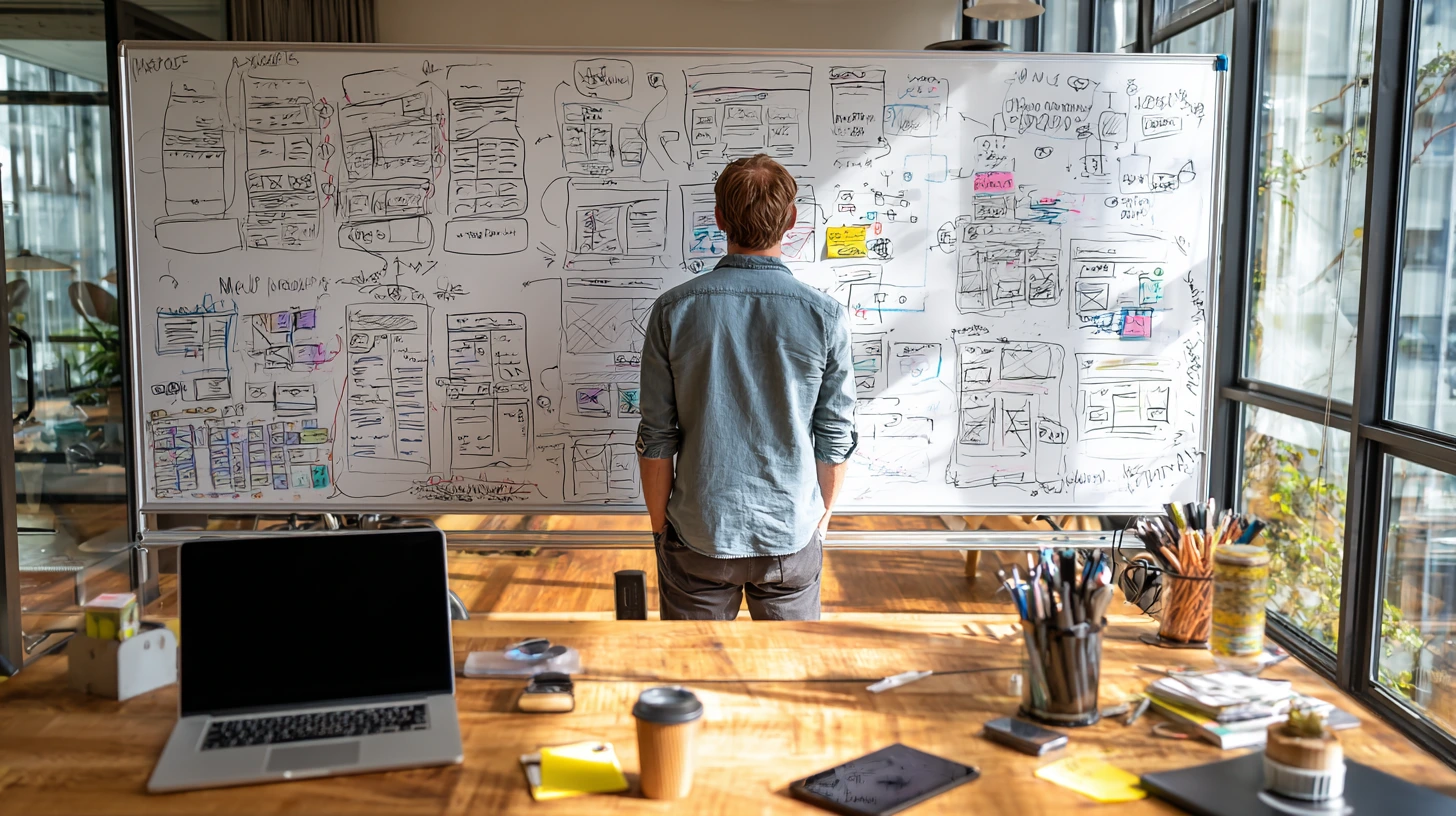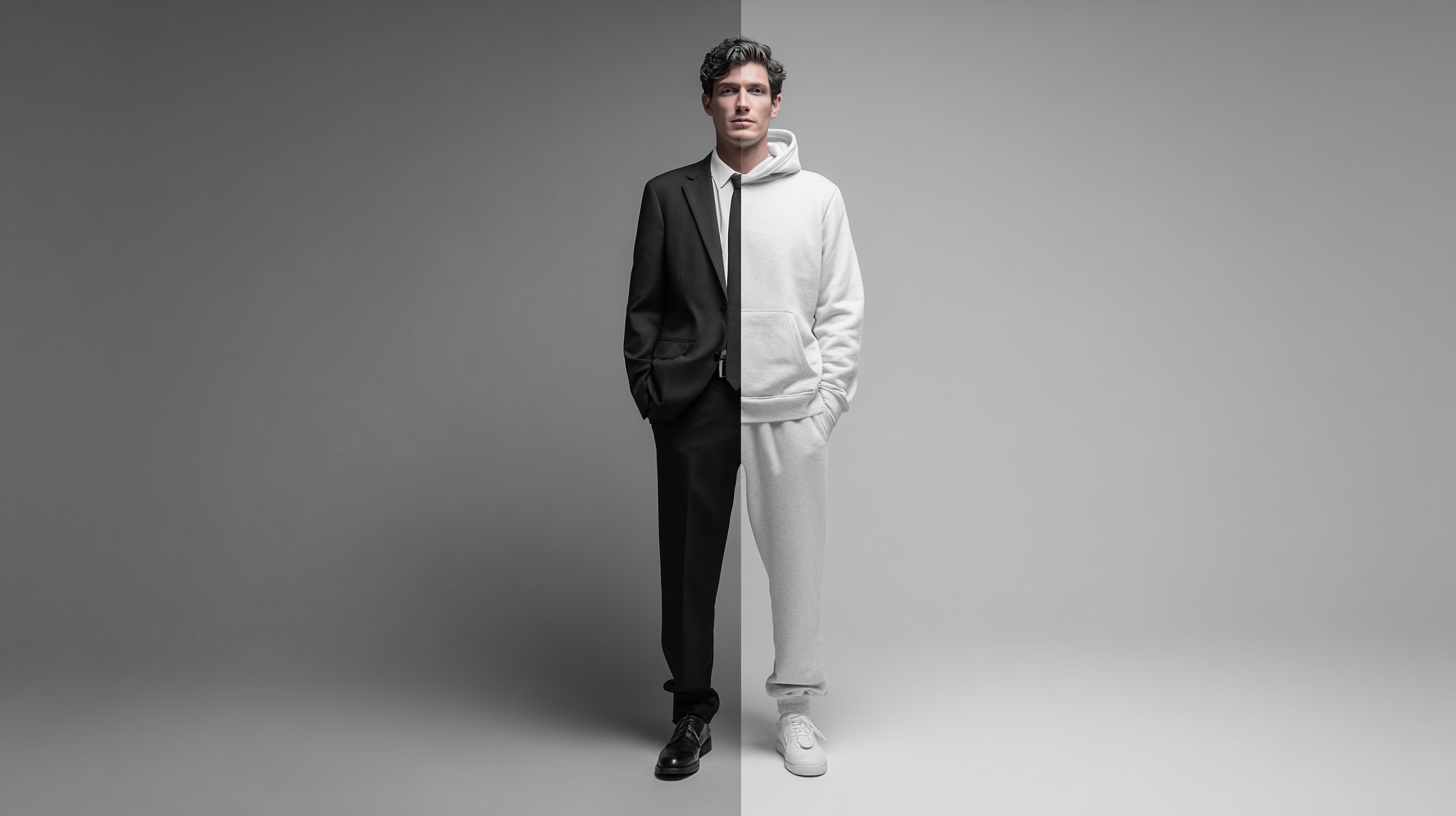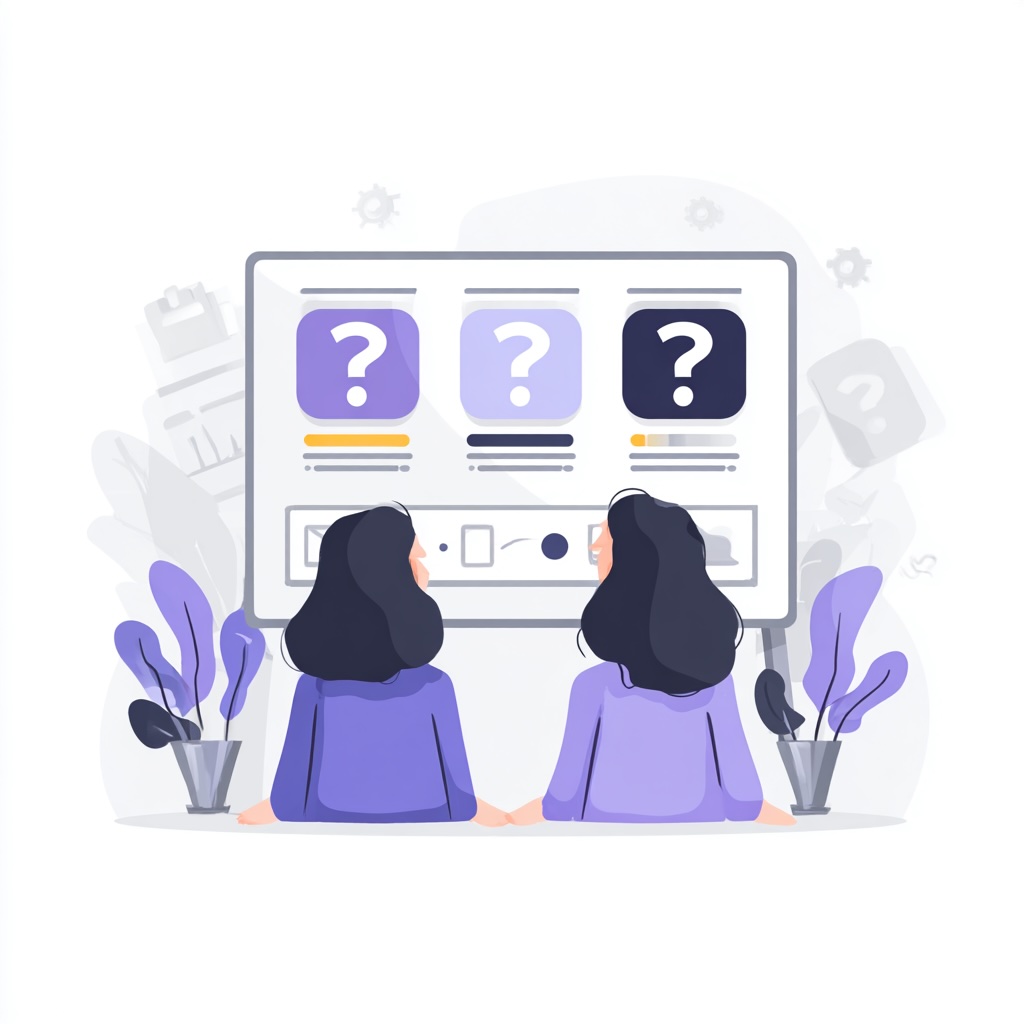

Table of contents

…and end up frustrated.
They drop off.
They don’t convert.
And they don’t come back.
The problem?
Most of the time, it’s not the product itself.
It’s about how people interact with it.
This is exactly where User Experience Design (or UX Design for short) comes into play.
For many executives, UX initially sounds like a topic for designers and creatives.
Nice-to-have, but not really relevant for business.
But the truth is: UX determines whether your digital offerings will delight or fail.
Because UX Design is far more than just pretty interfaces — it directly impacts your revenue, your costs, and your market position.
In this article, you will learn:
What UX Design really is — and what it’s not.
How UX supports your business goals.
Why UX has long since become a leadership priority.
In short: We’ll show you how to leverage UX Design as a strategic tool for growth and efficiency.

UX Design explained: More than just “pretty” — it’s about business value
UX Design determines whether users interact with your product smoothly — or abandon it.
Companies that excel in UX win more loyal customers, streamline their processes, and save on costly rework.
But what exactly is behind UX Design?
And why is it more than just a design issue for your business?
What does User Experience (UX) actually mean?
User Experience (UX) describes the experience a user has when interacting with a digital product. It covers every step — from the very first touchpoint to completing an action.
UX is not a feature.
It’s the result of usability, efficiency, and emotion.
Good UX ensures that users achieve their goals quickly and effortlessly.
Bad UX, on the other hand, leads to frustration, churn, and revenue loss.
Important: UX is always happening — whether it’s consciously designed or not.
Companies that ignore UX don’t end up with no UX — they end up with bad UX.
The Core Building Blocks of UX Design
Effective UX Design is built on four key pillars:
- User Research
- Information Architecture
- Interaction Design
•User Testing
User Research
User research is the starting point for any well-thought-out UX strategy. It's not about assumptions or gut feelings, but about truly understanding real users:
What are their goals?Where do users encounter frustration?What expectations do they have?
Without these insights, companies quickly develop solutions that fail to meet user needs. This often results in costly corrective measures or disappointed customers. User research provides the factual basis on which genuine relevance is built.
Information Architecture
Information architecture ensures that users can navigate digital products without having to think too much. Content and functions are structured in a way that feels logical and predictable to the user.
When users get “lost,” it’s often due to poor architecture, not functionality. A clear information architecture reduces friction points and ensures users reach their goals without detours.
Interaction Design (IxD)
Interaction design defines how users engage with a product. The goal is to design processes so intuitive that they feel effortless. Clear visual hierarchies and logical feedback cues always show users where they are and what happens next.
UI Design — the visual implementation of these interactions — is the step where these concepts are translated into concrete colors, shapes, and interface elements. But UI Design follows Interaction Design, not the other way around.
Usability Testing
Usability tests are the reality check in UX Design. Instead of relying on assumptions, the product is tested early on with real users. Weak points that often go unnoticed internally quickly come to light.
Companies that test and optimize regularly avoid costly surprises after launch and ensure satisfied users from day one.
Why UX Design Is Crucial for Business Success
UX Design has a direct impact on the metrics that matter for your business success.
Conversion rates increase when users are clearly guided and can reach their goals without detours. Every optimized click path, every intuitive interaction raises the chances of turning a prospect into a customer. UX Design deliberately crafts these journeys — efficient, intuitive, and user-centered.
When it comes to costs, UX Design is also a major efficiency booster. Early user research and continuous testing eliminate sources of error before they become expensive. Support efforts decrease because users need less assistance. Development resources are used more precisely because rework is drastically reduced.
And: A well-thought-out user experience ensures that your products don’t just stand out through their features, but through the feeling they create during use. UX Design, in a way, gives your brand a pleasant personality — and your customers will notice it.

What’s the Difference Between UX, UI & IxD (and Why Does It Matter for Business)?
UX Design determines business success because it structures and optimizes the user experience.
But UX is often confused with UI…
…or both are reduced to just “pretty” interfaces.
This leads to misplaced project priorities, costly misunderstandings, and wasted resources.
To avoid this, it’s worth taking a closer look: What roles do UX, UI, and IxD (Interaction Design) really play?
And how do they fit together within the broader context of Customer Experience (CX)?
UX is the Journey, UI the Touchpoint, and IxD the Script in Between
User Experience (UX) describes the entire experience a user has when interacting with your product. Every decision, every step, every emotion along this journey is part of it.
User Interface (UI), on the other hand, refers to the visible touchpoints: buttons, menus, colors, typography. UI is what the user sees and clicks on. But it’s not the experience itself — only its surface.
The link between them is Interaction Design (IxD). IxD defines how users interact with the product, which processes they go through, what feedback they receive, and how the whole experience feels. You could say: IxD writes the script, UI builds the set, and UX ensures the entire performance resonates with the audience.
Only when these three disciplines work together perfectly does a truly great user experience emerge. A beautiful interface (UI) without clear flows (IxD) remains unused. A well-thought-out flow without visual refinement feels dry. UX Design orchestrates both areas to make the user journey smooth and purposeful.
How CX Sets the Framework for UX & UI
Customer Experience (CX) broadens the perspective — moving beyond pure product usage to encompass the entire relationship a customer has with your company. CX considers all touchpoints: from the website to customer support to the purchasing process.
UX is a part of CX. While UX focuses on the interaction within a product, CX ensures that these experiences remain consistent and on-brand across all channels, even outside the product itself.
For decision-makers, this means: UX Design is a tactical tool for optimizing products. But it only reaches its full potential within a well-thought-out CX strategy. A strong UX experience must not remain isolated — it needs to be part of a seamless customer journey that extends far beyond the product itself.
The 3 Most Common Misconceptions About UX and UI Among Executives
In many companies, persistent misconceptions about UX and UI still exist at the leadership level.
The most common myth has already been mentioned: UX is seen as a mere “design topic” that can be handled at the end of a project. However, good UX doesn’t originate at the interface — it begins with designing the user journey, which should be conceptualized from the very start and influence product development.
Another misconception: UI Design is considered the “main product” of UX work. In reality, UI is the finishing touch. If processes, flows, and user guidance (IxD) are not well-thought-out, even the most beautiful interface won’t be able to save the experience.
And finally: UX is often viewed as a one-time task. Once implemented, it’s checked off the list. But user behavior changes. Markets evolve. UX Design is an ongoing process that needs to grow alongside these shifts in order to remain effective in the long run.

The ROI of UX Design: Metrics That Matter to Executives
UX Design directly impacts measurable KPIs that are relevant in every management meeting. From conversion rates and customer retention to efficiency gains in product development — UX Design influences factors that sustainably affect revenue, costs, and market positioning.
Conversion, Retention & Customer Lifetime Value
A great user experience removes barriers, eliminates uncertainties, and guides users efficiently to their goal. Every unnecessary form step, every unclear navigation costs conversions. UX Design identifies these weak points — and ensures that prospects smoothly become customers.
But the value doesn’t end with the first purchase, because good UX also strengthens long-term loyalty. Users who feel understood and guided efficiently through a product will come back. They stay loyal, explore additional features, and recommend the product to others. Instead of one-off transactions, a long-term customer relationship is created — one that is measurable and scalable.
Cost Savings Through UX-Optimized Processes
Yes, UX Design saves costs.
Not because it makes pretty interfaces cheaper.
But because it prevents expensive detours.
Inefficient workflows, unnecessary development loops, support inquiries that shouldn’t exist in the first place — this is where good UX makes a difference.
Every early user research session saves costly rework.
Every tested prototype reduces the risk of misdevelopment.
Companies that integrate UX firmly into their processes avoid expensive redesigns and bring products to market faster.
Support costs also decrease. Users find their way through the product — without hotlines, without explanations needed.
UX Design acts as an efficiency filter here. It forces teams to replace assumptions with real user needs. And that saves resources before they even get wasted.
Competitive Advantage: UX as a Market Differentiator
UX Design is one of the most powerful levers to stand out in digital competition.
Why?
Markets are flooded with products offering similar features. But the experience users have with them — that’s something you can’t copy.
Companies that leverage UX strategically score not only on functionality but emotionally. Users remember products that feel pleasant, efficient, and respectful. These experiences shape brand perception — and build trust in a market driven by comparability.
UX is not a cost driver. UX is a value driver.
It determines whether your company is perceived as “replaceable” — or as a provider who truly understands what its customers want.
Want to dive deeper into UX Design KPIs? Then read the article on the ROI of UX.

How to Integrate UX Design into Your Product Strategy
For UX Design to deliver its full business impact, it must become an integral part of your product strategy. The goal is to firmly embed UX into the processes, mindsets, and objectives of product development from the very beginning.
Agile teams develop, test, and optimize in rapid iterations.
And this is exactly where UX Design fits in perfectly.
The key point: UX must not be treated as a downstream task.
It needs to be a fixed element in every sprint planning, every refinement, and every review.
User Research provides the insights to prioritize the backlog correctly.
UX Designers work hand in hand with Product Owners and developers to design user flows that are efficient and easy to understand. Prototypes are tested early, so feedback can be incorporated during ongoing development.
UX in agile processes means: hypotheses about user behavior are continuously tested — and adjusted.
This keeps the product closely aligned with the user. Sprint by sprint.
Collaboration Between UX, Product, Engineering & Marketing
Ideally, UX Design becomes the central hub where product strategy, technological feasibility, and brand visibility converge.
But how does this collaboration work?
Product teams define the requirements.
Dev teams contribute the technical know-how to implement these efficiently and at scale.
UX ensures that all these requirements are understandable, seamless, and efficient from a user perspective.
Marketing then translates the product promise into a consistent brand message across all touchpoints.
This collaboration only succeeds when UX Designers are seen as active members of the core team and act as mediators between business goals, technical implementation, and user needs.
When UX Designers Should Be Involved in a Project (Spoiler: Early On)
The biggest mistake in many projects: UX Designers are only brought in when the product is already far along.
Or worse: when “only the design is missing.”
That’s like hiring an architect when the building shell is already standing.
UX Design belongs at the beginning.
As early as the discovery phase, when the problem to be solved is still being defined, UX Designers provide valuable input.
They bring user research into the project, structure initial ideas into concrete user flows, and ensure that usable, tangible solutions are created from the very start.
This has also been proven in a case study from the healthcare sector.
The earlier UX is integrated into a project, the fewer costly correction loops are needed later on.
UX Design acts preventively: it prevents products from being built that miss the mark with users.

Costly UX Mistakes That Drain Budgets
When applied correctly, UX Design acts as insurance against misdevelopment.
Yet, we repeatedly see companies making the same mistakes.
Mistakes that not only cost time and nerves but are directly measurable in hard numbers: lost customers, halted projects, expensive redesigns.
Here are the three most costly UX mistakes leadership teams should know — and avoid.
Building Features No One Uses
Product teams often invest months into features based on assumptions.
Yes, assumptions can sometimes be right.
But without solid user research, it’s an avoidable shot in the dark.
The result: Complex features that are barely used in reality.
And wasted resources that would have been better spent optimizing core processes.
UX Design ensures that features provide real value, using early user interviews, prototyping, and validation filters along the way.
“UX Is Developed Without KPI Alignment”
UX projects don’t fail because no UX is done — they fail because UX is pursued without clear business goals.
Teams optimize user flows, refine interfaces, test prototypes.
But often, there’s a lack of connection to the KPIs that matter for the business: conversion rates, retention, cost-per-acquisition.
UX Design without KPI focus is like sailing without a compass.
It feels like progress, but no one knows if it’s in the right direction.
For UX Design to have real business impact, it must be aligned with specific success metrics:
Which user action needs optimization?
Which conversion path is critical?
Which costs need to be reduced?
UX should never be an end in itself — it must always be a data-driven, targeted part of the business strategy.
UX Gets Cut as a “Nice-to-Have” in Budget Discussions
In many companies, UX stands on shaky ground in the budgeting process.
While development and marketing are seen as non-negotiable, UX is often treated as optional. When budgets are tight, the user experience is one of the first areas to be cut.
But what saves money in the short term leads to significant losses in the long term: products become error-prone, support costs skyrocket, and in the end, users abandon the product.
The late-stage corrections will be exponentially more expensive than the early investment in UX ever would have been.
UX Design must be established as a strategic budget item — the foundation for functional, market-ready products — and included from the very start of every project plan.
Anyone who negotiates UX out of the budget will pay for it later.
Guaranteed.

How We at brightside Studio Create UX Designs with Business Impact
We don’t just write helpful articles about UX Design.
Our main mission is to help SMEs design digital products that users intuitively understand — while delivering measurable business results.
We combine clear UX strategies with intuitive UI Design. Always based on what your users truly need. And most importantly: aligned with your KPIs.
For us, it’s not about how “pretty” an interface looks — but about the conversion rate it delivers. Or how many support tickets it eliminates.
We don’t work like a typical agency that drops smart concepts from the outside. Instead, we integrate seamlessly into your existing team.
As UX specialists who support your product development, think alongside you, and keep pace with your momentum.
Whether you're a startup with a fresh idea or an established company in digital transformation — we step in exactly where UX can have the greatest impact.
Our projects prove that this approach works:
For Jobsmart Europe, we delivered an MVP in just 6 weeks, which gained over 5,000 active users within half a year.
For DAAD, we led the UX efforts in building a platform that now connects almost one million international students worldwide.
And for Setting HQ, our UX Design helped drastically reduce administrative workload — laying the foundation for scalable growth.
Our clients appreciate that we speak their language. Whether in the public sector, healthcare, education, or industry: we understand sector-specific requirements — and develop solutions that fit. No off-the-shelf solutions, but tailored experiences.
In short: We design UX that delivers business impact. Directly, measurably, and sustainably.
Question for you: Which UX challenge is currently your company’s biggest concern?
Let’s discuss — just book a free consultation with us directly.

FAQ: The 15 Most Common UX Design Questions for Decision-Makers
What’s the difference between UX and UI Design?
UX describes the overall user experience — UI is the visual interface the user interacts with.
Why is UX so important for business success?
Because UX directly impacts revenue, customer retention, and cost structures. Poor UX loses customers — good UX wins them.
When should UX Design start in a project?
Ideally from Day 1. UX belongs in the discovery phase, not at the end of development.
How does UX affect my conversion rate?
UX optimizes user flows, removes barriers, and ensures that more users complete the desired actions.
How much does UX Design cost?
The investment depends on the project scope. What’s certain: early UX saves a multiple of correction costs later on.
Is UX Design only relevant for large companies?
No. SMEs benefit greatly, as UX helps them become more efficient and competitive.
How do you measure the success of UX Design?
Through concrete KPIs such as conversion rate, retention, support costs, time-on-task, and qualitative user satisfaction.
What happens if UX is ignored in a project?
Projects become more expensive, error-prone, and often fail at the user level. The result: lost customers and costly relaunches.
What role does user research play in UX Design?
User research is the foundation. Without real insights, UX Design remains a guessing game.
Can UX be optimized in existing products afterward?
Yes. UX audits and usability tests reveal weak points that can then be specifically improved.
How is UX Design integrated into agile product development?
UX becomes part of the sprints: user feedback is continuously incorporated, and hypotheses are tested iteratively.
What sets brightside Studio apart from other UX agencies?
We approach UX from a business perspective: KPIs are our guiding principle, not a design portfolio.
How quickly can brightside execute projects?
Thanks to large capacity, we are flexible — from rapid MVP sprints to long-term UX partnerships.
Which industries does brightside have particular expertise in?
Education, healthcare, fintech, industry, and the public sector.
How does collaboration with brightside work?
From UX audits and strategy workshops to design sprints — we adapt to your project structure and collaborate seamlessly with your teams.









